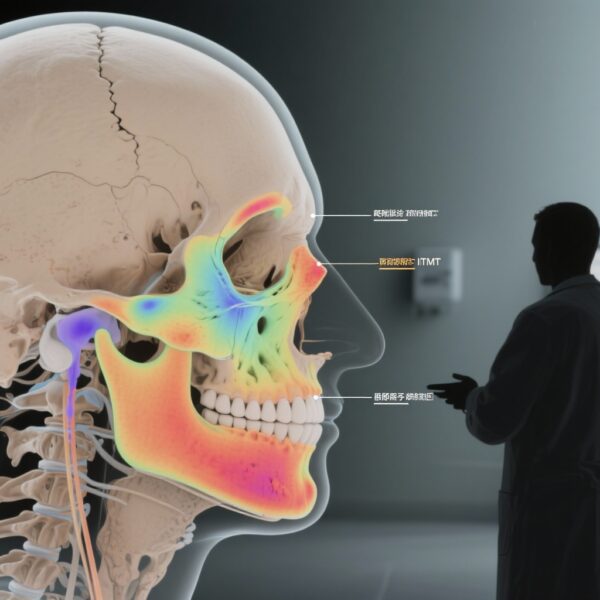Highlight
Key points
• A pooled analysis of phase 3 trials (n = 9,538) reported a lower pooled incidence of left ventricular ejection fraction (LVEF) decline with trastuzumab emtansine (T‑DM1) at 0.94% versus higher rates for trastuzumab deruxtecan (T‑DXd) (4.20%) and trastuzumab-based regimens combined with chemotherapy or pertuzumab (≈4.8%–5.5%).
• Absolute incidence of clinically significant cardiotoxicity across agents was low in these trials, but trial eligibility criteria and monitoring protocols likely underestimate real-world risk.
• Clinicians should continue guideline-driven baseline assessment and individualized surveillance, and integrate cardio‑oncology referral for higher‑risk patients or LVEF decline.
Background and clinical importance
Targeting ERBB2 (HER2/neu) transformed outcomes in HER2‑positive breast cancer. Antibody‑drug conjugates (ADCs) combine antibody specificity with potent cytotoxic payloads and have markedly improved progression‑free and overall survival in advanced disease. Trastuzumab emtansine (T‑DM1) and trastuzumab deruxtecan (T‑DXd) are now standard options across lines of therapy. However, HER2 signalling is also relevant in cardiac myocytes, and several HER2‑directed therapies (notably trastuzumab) carry a recognized risk of cardiac dysfunction. Understanding cardiotoxic profiles of modern ADCs relative to traditional trastuzumab‑based chemotherapy regimens is essential to optimize patient selection, monitoring, and management.
Study design and methods (what was analyzed)
The reported analysis (Seth et al., JAMA Netw Open, 2025) is a systematic review and meta‑analysis of phase 3 randomized trials in locally advanced or metastatic HER2‑positive breast cancer published between 2000 and 2024. Key inclusion criteria were: explicit definitions for LVEF decrease or heart failure; prespecified LVEF monitoring (echo or MUGA) and frequency; inclusion of T‑DM1, T‑DXd, or guideline‑recommended chemotherapy regimens for unresectable stage IV disease; and clearly stated cardiovascular eligibility criteria. Data extraction was performed independently by three reviewers; pooled incidence estimates of LVEF decrease used logit‑transformed proportions with inverse variance weighting and a DerSimonian‑Laird random‑effects model; Wilson score 95% confidence intervals were reported. The authors evaluated heterogeneity and tested for publication bias (with trim‑and‑fill where indicated).
Key findings
Primary pooled incidence estimates
• T‑DM1 (trastuzumab emtansine): pooled incidence of LVEF decrease 0.94% (95% CI, 0.56%–1.57%).
• T‑DXd (trastuzumab deruxtecan): pooled incidence of LVEF decrease 4.20% (95% CI, 2.91%–6.01%).
• Trastuzumab + chemotherapy: pooled incidence 4.85% (95% CI, 3.73%–6.28%).
• Trastuzumab + pertuzumab + chemotherapy: pooled incidence 5.52% (95% CI, 3.41%–8.83%).
These results indicate a notably lower pooled incidence of LVEF decline with T‑DM1 compared with T‑DXd and trastuzumab‑containing regimens, with the latter three showing overlapping confidence intervals.
Interpretation of effect sizes and clinical significance
Although relative differences are apparent, absolute incidences of LVEF decline were low across trial populations. Importantly, the trials included in pooled estimates were generally restricted to patients with preserved baseline cardiac function and limited cardiovascular comorbidity. Severe clinical heart failure events were less frequent than subclinical LVEF decreases; many LVEF reductions were asymptomatic and reversible with standard management. Thus, while T‑DM1 appears to have the most favorable LVEF profile among agents studied in this meta‑analysis, differences must be interpreted in the context of trial selection and outcome ascertainment.
Safety signals beyond LVEF decline
The meta‑analysis focused on LVEF decrease as the primary cardiotoxicity measure. Other cardiovascular events (symptomatic heart failure, arrhythmias, ischemic events, hypertension) were less commonly reported across trials or variably defined, limiting pooled analysis. Known class‑specific toxicities (for example, interstitial lung disease with T‑DXd) lie outside LVEF‑based cardiotoxicity but inform overall tolerability and therapy choice.
Mechanistic considerations
Two non‑mutually exclusive mechanisms underlie HER2‑targeted cardiotoxicity. First, blockade of HER2 signalling in cardiomyocytes disrupts neuregulin‑1/ErbB-mediated pro‑survival pathways, increasing susceptibility to stress and anthracycline injury. Second, ADC payloads may cause off‑target toxic effects if systemic exposure occurs or if linker instability releases cytotoxin into circulation; the payloads differ (e.g., DM1 is a microtubule inhibitor; DXd is a topoisomerase I–inhibiting camptothecin derivative) and may have distinct cardiac safety profiles. Trial populations, prior anthracycline exposure, dose schedules, and pharmacokinetics likely contribute to observed differences between agents.
Strengths and limitations of the meta‑analysis
Strengths:
• Focused inclusion of phase 3 randomized trials with prespecified cardiac monitoring improves internal validity compared with mixed observational evidence.
• Standardized meta‑analytic methods (logit transformation; random‑effects model) and sensitivity analyses for publication bias strengthen inference.
Limitations:
• Trial eligibility commonly excluded patients with reduced baseline LVEF or clinically significant cardiac disease, which underestimates real‑world cardiotoxicity in older or multimorbid populations.
• Definitions of LVEF decline and monitoring frequency, although required for inclusion, still varied across studies; event ascertainment and timing differ.
• Duration of follow‑up in trials (particularly for newer ADCs) may be insufficient to detect late or cumulative cardiac effects.
• The analysis centers on LVEF decline; symptomatic heart failure, biomarkers (troponin, natriuretic peptides), diastolic dysfunction, and arrhythmic events received limited pooled attention.
• Heterogeneity in prior therapies (notably anthracycline exposure) and line of therapy may confound agent‑specific comparisons.
Clinical implications and practical guidance
1) Baseline evaluation: All patients initiating HER2‑directed ADCs should have baseline cardiovascular assessment with history, exam, and LVEF measurement (echocardiography or MUGA). Obtain baseline blood pressure control, review prior anthracycline exposure, and consider biomarkers for higher‑risk patients.
2) Surveillance: Follow guideline‑informed monitoring (for example, every 3 months while on therapy is commonly used for trastuzumab‑based regimens), but tailor frequency to patient risk. Consider more frequent evaluation or cardiology referral for patients with borderline LVEF, prior anthracycline exposure, hypertension, CAD, or age-related risk.
3) Management of LVEF decline: For asymptomatic LVEF decline that meets guideline thresholds (e.g., ≥10% absolute drop to <50%), temporarily hold HER2‑targeted therapy and institute heart failure guideline‑directed therapy where appropriate. Rechallenge decisions should be multidisciplinary and consider reversibility, cancer control needs, and alternative agents.
4) Agent selection: While T‑DM1 showed the lowest pooled LVEF decline incidence, clinical selection should prioritize overall efficacy, line of therapy, comorbidity profile, and known noncardiac toxicity (e.g., ILD risk with T‑DXd). In high cardiac‑risk patients, T‑DM1 may be considered when clinically appropriate, but individualized decision‑making is essential.
5) Cardio‑oncology collaboration: Early involvement of a cardio‑oncologist benefits higher‑risk patients and those with LVEF decline to optimize cardiac therapy and allow for safe continuation of anticancer treatment when possible.
Expert commentary and guideline context
Current cardio‑oncology guidance (European Society of Cardiology position papers and oncology guideline statements) emphasize baseline cardiac assessment and individualized monitoring during HER2‑directed therapies. The lower pooled LVEF incidence with T‑DM1 is reassuring but does not obviate the need for surveillance, given trial selection biases. The higher observed incidence with T‑DXd in pooled data warrants attention, but must be interpreted alongside evidence of markedly superior oncologic efficacy in certain settings (e.g., DESTINY‑Breast03) and other toxicities that influence therapy choice.
Research gaps and future directions
• Real‑world studies that include older patients and those with cardiac comorbidities are needed to define true population risk.
• Longer follow‑up to capture late cardiotoxicity and comparative studies with cardiac biomarker endpoints would enhance detection and early intervention.
• Mechanistic work to delineate the contribution of payloads versus HER2 blockade to myocardial injury could guide safer ADC design and risk mitigation.
Conclusion
This systematic review and meta‑analysis provides important comparative data on LVEF decline with contemporary HER2‑directed ADCs and trastuzumab‑based regimens. T‑DM1 was associated with the lowest pooled incidence of LVEF decrease, while T‑DXd and trastuzumab‑based combinations had overlapping, modest incidences. Given trial selection bias and monitoring heterogeneity, clinicians should maintain guideline‑recommended baseline assessment and individualized surveillance, involve cardio‑oncology for high‑risk patients, and weigh cardiac risk together with oncologic efficacy when selecting agents.
Funding and ClinicalTrials.gov
Funding: See the original publication (Seth et al., JAMA Netw Open 2025) for details on study funding and author disclosures.
ClinicalTrials.gov: The meta‑analysis synthesized data from multiple phase 3 trials whose identifiers and protocols are registered in ClinicalTrials.gov; readers should consult trial publications and registry entries for individual trial details.
Selected references
1. Seth L, Bhave A, Kollapaneni S, et al. Cardiotoxic Effects of Antibody Drug Conjugates vs Standard Chemotherapy in ERBB2-Positive Advanced Breast Cancer: A Systematic Review and Meta-Analysis. JAMA Netw Open. 2025 Nov 3;8(11):e2540336. PMID: 41206886; PMCID: PMC12598513.
2. Verma S, Miles D, Gianni L, et al. Trastuzumab emtansine for HER2‑positive advanced breast cancer. N Engl J Med. 2012;367(19):1783–1791.
3. Gianni L, Pritchard KI, Romond EH, et al. Pertuzumab, trastuzumab, and docetaxel for HER2‑positive metastatic breast cancer (CLEOPATRA). N Engl J Med. 2012;366(2):109–119.
4. Modi S, Jacot W, Yamashita T, et al. Trastuzumab deruxtecan versus trastuzumab emtansine for breast cancer. N Engl J Med. 2022;386:1143–1154 (DESTINY‑Breast03).
5. Lyon AR, López‑Fernández T, Couch LS, et al. 2022 ESC Guidelines on cardio‑oncology: cardiovascular care of oncology patients. Eur Heart J. 2022;43(41):4229–4361.
6. Moslehi JJ, Bloom MW, Curigliano G, et al. Cardiovascular toxicities of cancer therapies: current knowledge and future directions. JACC CardioOncology. 2020;2(4):468–486.
(Readers are encouraged to consult original trial reports and society guidelines [e.g., NCCN, ASCO, ESC] for detailed monitoring recommendations and trial identifiers.)



